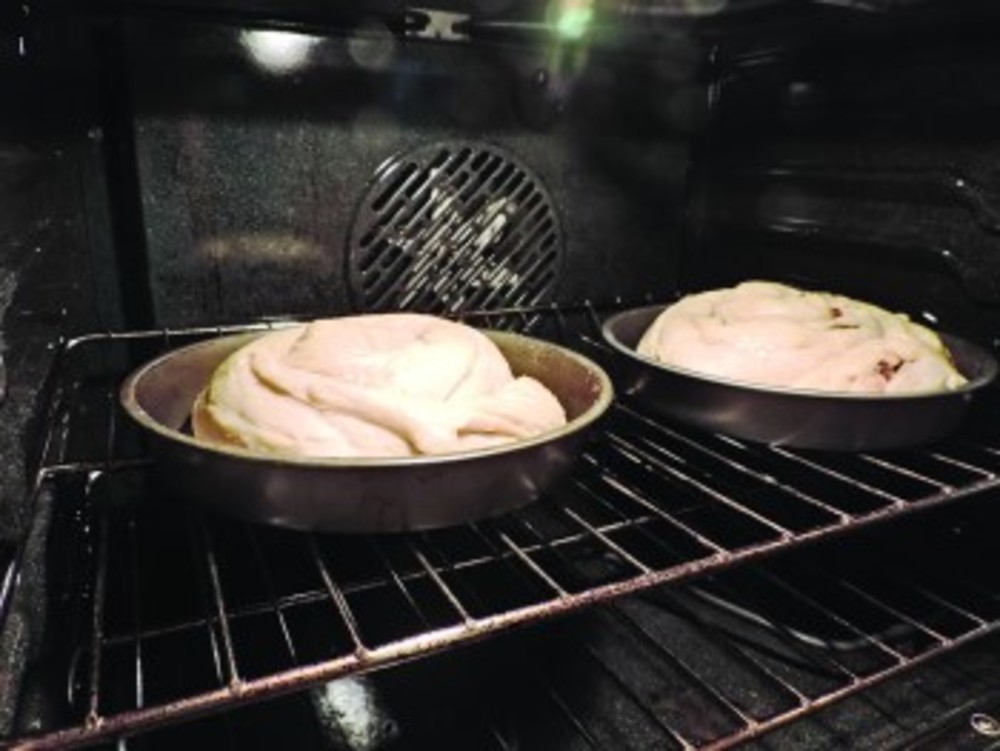Journey to a Rosh Hashanah Challah
 Baking challah is a weekly ritual in many households. It can be a daylong affair. The mixing, the kneading, the hours of rising, then the braiding and, finally, more rising. But the results are unparalleled. Usually.
Baking challah is a weekly ritual in many households. It can be a daylong affair. The mixing, the kneading, the hours of rising, then the braiding and, finally, more rising. But the results are unparalleled. Usually.
I have to admit I have a problem with braiding. I’ve never been able to braid my daughter’s hair, and I certainly can’t braid a challah with any finesse. It doesn’t matter that I’ve been trying since early high school. Braid the dough, turn around and it comes apart. Let it rest, same result. So the round Rosh Hashanah challah is my favorite. I can make a spiral that gets rave reviews. I admit that I want to try a braided round. I’ve studied the diagrams, and they don’t look too complicated. But I may let that wait for another time.
Anyway, this project results from another challenge. About three years ago, I started using a bread machine for my High Holy Day challah. What a wonderful timesaver. All the ingredients go into the pan, turn on the machine and walk away until it’s time to shape and bake. At last, I could multitask and the resulting dough was perfect. That is, until last year when the machine stopped working mid-rising. No amount of coaxing could get it to start.
So, I’m back to uncharted territory. A tasty recipe needs to be reinvented.
No bread machine. And certainly no braiding.
This recipe is not written for a bread machine. I just adapted it to my machine from the beginning. This year, I decided to use a food processor for the mixing.
The results were attractive and tasty. The bread didn’t rise as high as last year when I left the dough in the bread machine to knead. But it’s certainly an acceptable looking loaf for my table. And my house on a late August Sunday smelled fantastic.
Here’s the recipe, courtesy of King Arthur Flour. It has just enough sweetness for the new year but it’s not too sweet to take its rightful place at the dinner table. You can choose to use raisins or not, depending on your taste and tradition. I use a little extra honey in the loaf without raisins, but you may need a little extra flour in that loaf too because of the liquid. I never needed extra flour in the bread machine, but I certainly did in the food processor. You could form this is into a long traditional braid. But this is the season of the round challah, symbolizing continuity of the years. So that’s how I did it.
Raisin Challah
Courtesy of King Arthur Flour
Dough
1/2 cup lukewarm water
6 tablespoons vegetable oil
1/4 cup honey
2 large eggs
4 cups King Arthur Unbleached All-Purpose Flour
1-1/2 teaspoons salt
5 teaspoons instant yeast
1-1/2 cups golden raisins, packed
Topping
1 large egg beaten with 1 tablespoon cold water
2 tablespoons coarse white sparkling sugar (optional)
Directions
1. To make the dough: Combine
all of the dough ingredients
except the raisins, and mix
and knead them, by hand,
mixer or bread machine, until
you have a soft, fairly smooth
dough.
2. Allow the dough to rise,
covered, for 2 hours, or until
it’s puffy though probably
not doubled in bulk.
3. Gently deflate the dough,
and knead in the raisins.
4. Lightly grease a 9-inch round
cake pan.
5. Roll the dough into a 30- to
36-inch rope. If it shrinks
back, walk away and leave
it alone for 10 minutes, then
resume rolling. The longer
the rope the more distinct
the spiral, but if it isn’t
exactly 36 inches long, don’t
stress; just get as close as you
can.
6. Coil the rope into the
prepared pan, starting in the
center.
7. Cover the challah gently
with lightly greased plastic
wrap or a proof cover, and
allow it to rise for about 60 to
90 minutes, until it’s puffy
and pretty much fills the pan.
8. Near the end of the bread’s
rise, preheat the oven to 375
degrees F.
9. Whisk together the egg and
water. Brush the risen dough
with the egg mixture. Sprin-
kle with coarse white sugar,
if desired.
10. Bake the bread for 20
minutes, tent it with foil and bake for an additional
15 to 20 minutes, until it’s a
deep, golden brown, and an
instant-read thermometer
inserted into the center
registers 190 degrees F.
11. Remove the bread from the
oven, and after a minute or
so carefully transfer it to a
rack. Cool the bread to
lukewarm before cutting it.
FRAN OSTENDORF is editor of The Jewish Voice.







